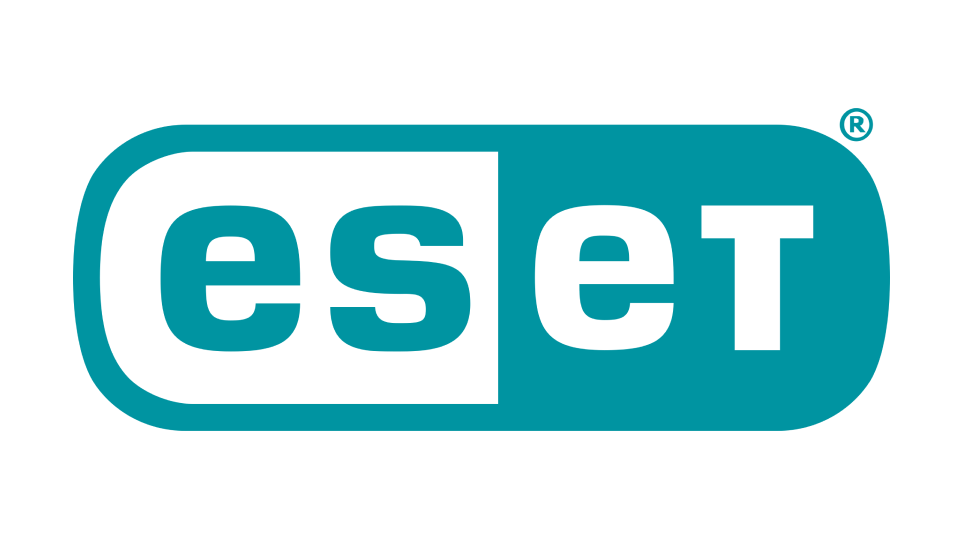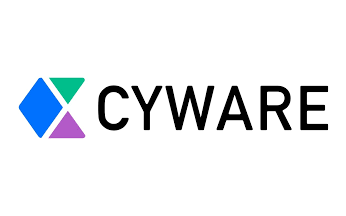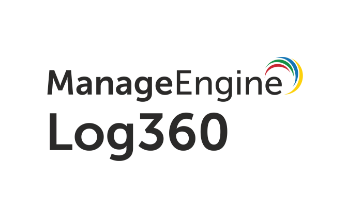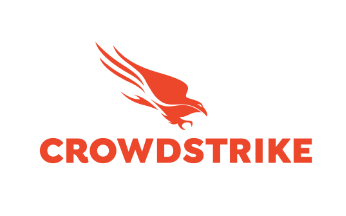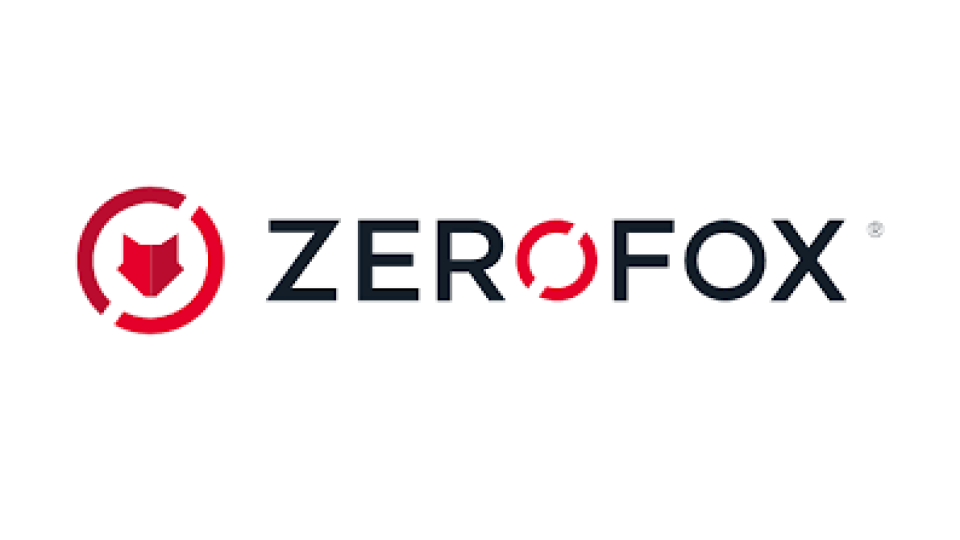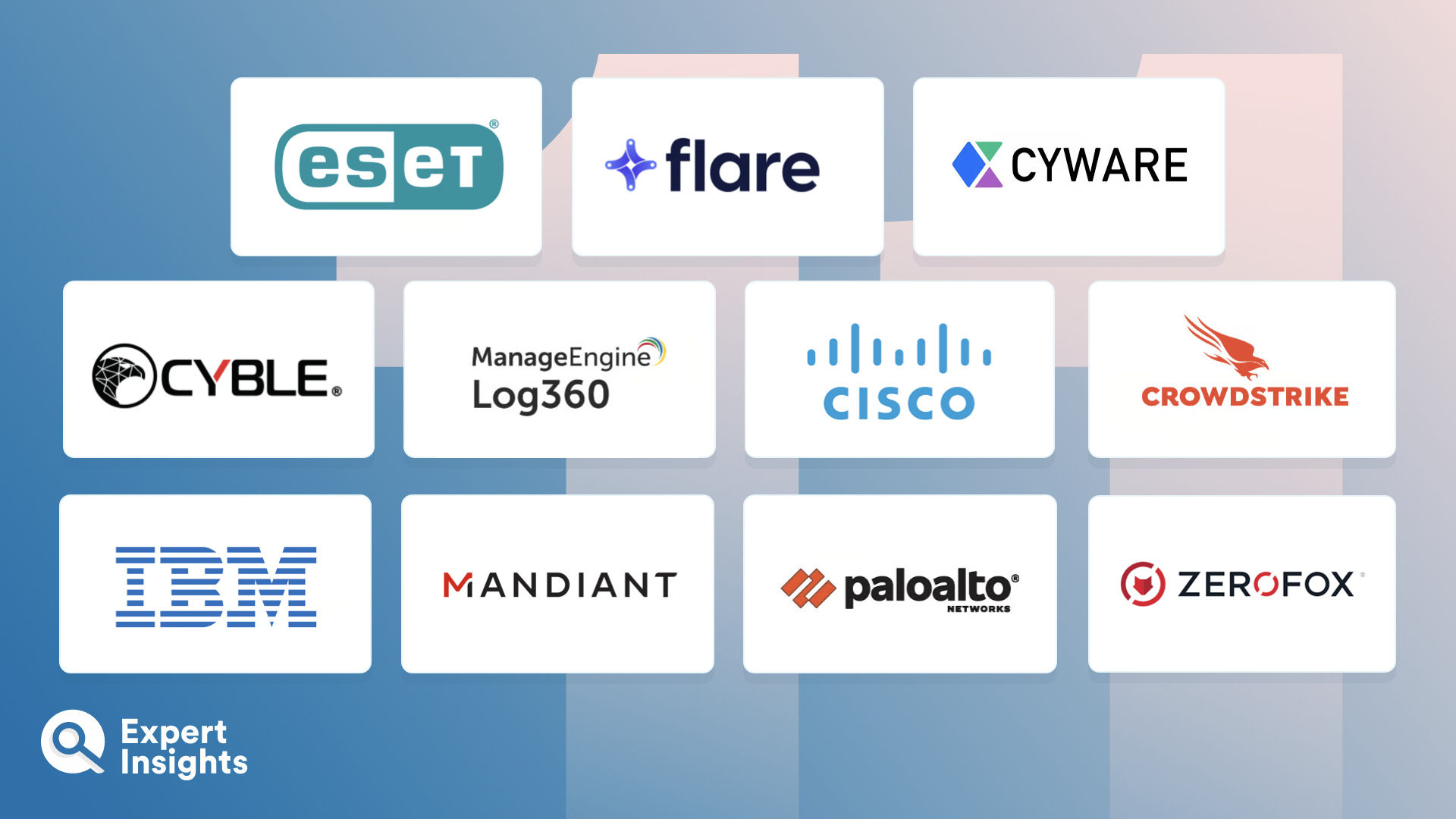Other Solutions To Consider
We researched lots of threat intelligence solutions while we were making this guide. Here are a few other tools that are worth your consideration:
- Recorded Future Threat Intelligence: Identifies cyberthreats relevant to your organization so you can take preventative, informed action to mitigate possible threats.
- ReliaQuest GreyMatter Threat Intelligence: Contextualises threat research and indicators of compromise from a variety of threat feeds to give you an accurate, holistic view of existing and emerging threats.
- Flashpoint: Provides detailed insights into fraud, ransomware, account takeover, brand risk, vulnerabilities, physical threats that may affect your organization.
- Fortra Threat Brain: Provides a single, centralized intelligence hub fed by telemetry across Fortra’s product portfolio, alongside insights gained from Fortra’s partners, the dark web, social media, and law enforcement.
- Rapid7 Threat Command: Provides deep and dark web monitoring, contextualized alerts, and actionable intelligence to help you prioritize mitigation efforts and shorten investigation time.
- Fortiguard: Provides global threat analytics, outbreak alerts, research, publications, and presentations to help you identify the most relevant threats to your organization.
Cyber Threat Intelligence Solutions: Everything You Need To Know (FAQs)
What Is Cyber Threat Intelligence?
Cyber Threat Intelligence (CTI) describes any data that is gathered and analyzed to answer questions relating to your digital and cyber infrastructure or events. This can be a very broad subject area. Some CTI solutions will focus on your organization, your capabilities, and the active threats that you face. However, CTI also encompass broader trends that may affect entire industries or technologies.
CTI may be used to carry out threat hunting and investigation time into specific types of malware, as well as highlighting suspicious activity. Information can be gathered regarding the malware’s origin, attack method, and Indicators of Compromise (IoCs). This assessment will be based on detection rules and other cybersecurity experts, if the platform offers a Managed service with a skilled Security Operations Center (SOC) team.
This intelligence can be used to identify the malware more quickly in future cases. This, by extension, improves remediation times, keeping your organization more secure.
At the other end of the scale, organizations might use CTI to identify market trends and plan future cybersecurity strategy. In this case, organizations will be looking at the “big picture” – such as new cybersecurity technology to implement – rather than the specific details of an individual threat. The big questions in today’s CTI landscape include AI and its uses in carrying out or defending against attacks, as well as how the metaverse might change the way we work.
What Are The Different Types Of Cyber Threat Intelligence?
Cyber Threat Intelligence can be split into three main intelligence groups, defining the type of intelligence they gather and who it is designed for.
Tactical Intelligence is the most granular and specific form of intelligence that focuses on individual threats.
- Attack behavior
- Indicators of Compromise (IoC)
- Best remediation actions
Operational Intelligence relates to the implementation of policies and effectiveness of security tools overall.
- Configuration policies
- Malware detection rates
- Network dwell time
Strategic Intelligence looks at the big picture, long term trends to plan a multi-year cyber security strategy.
- Emerging threats and vulnerabilities
- Competitor and peer experience
- Cost effectiveness and ROI of cybersecurity tools
Depending on which type of intelligence you need, there will be different solutions on the market, with different preset (and configurable) detection rules. Some platforms may offer intelligence across multiple areas, or package information differently depending on destination. This information has a range of applications and uses, depending on the questions that you ask of it.
What Features Should You Look For When Selecting A Cyber Threat Intelligence Platform?
Cyber Threat Intelligence is a very broad topic that can have a broad range of applications. Because of this, it can seem overwhelming when trying to identify which features are important for your use-case. In this section, we’ll highlight some of the key features that you should consider when selecting a cyber threat intelligence platform.
- Effective Data Analysis – CTI platforms are able to ingest vast amounts of data from across your digital estate. This information should be properly assessed and analyzed to give accurate and relevant insights. Human users have very little use for vast quantities of raw data but have a lot to gain from processed data and accurate insights.
- Data Collection – Your CTI solution should collect data from across your estate, infrastructure, devices, and wider databases to ensure that its insights are accurate and relevant. The more data your platform has access to, the more reliable your data will be. The exact locations that you gather data from will depend on the type of information that you need, as well as the structure and configuration of your organization. When searching for compromised credentials, for instance, it is important to scan dark web forums and marketplaces.
- Automation – Some platforms deliver automatic responses and remediation. This ensures that any loopholes or errors can be addressed quickly, thereby reducing the time that you are at risk. Effective automation allows you to streamline workflows and improve response times.
- Scalability – Good CTI platforms should be able to manage all the data that you can provide them. As your organization grows, you will increase the amount of data that a CTI platform has access to. Your platform should have capacity for this, ensuring that no data is overlooked and, therefore, no threat is ignored.
- User-Friendly UI – Your platform should provide clear and concise findings and intelligence, allowing you to quickly understand status and events. There should also be ways of generating and sharing specific reports for different parties. Many solutions use clear intelligence graphs and vulnerability reports to share findings with relevant stakeholders.
- Intelligence Quality Ratings – While it would be great if intelligence quality could sit at 100% all the time, this simply isn’t possible. Some CTI platforms will generate an intelligence quality rating, evaluating how strong the intelligence is. High-quality, critical information can then be prioritized over less accurate or less risky data.
How Does Cyber Threat Intelligence Work – The Threat Intelligence Lifecycle
When it comes to gathering cyber threat intelligence, you might hear the phrase: “cyber threat intelligence lifecycle”. This is used to outline the ongoing process for collecting, collating, analyzing, and presenting relevant information.
The timeframe for this lifecycle will differ depending on how urgent the information is, and who it is designed to advise. For example, strategic intelligence might only be presented quarterly, whilst tactical intelligence needs to be presented minute-by-minute to keep your organization safe.
There are six steps that inform how CTI is gathered and presented to relevant parties:
- Requirements
Your organization must decide what type of intelligence you intend to gather. You’ll need to consider who your stakeholders are, and what you would like the outcome of the analysis to be. You might want to explore an attack surface, understand assets, or decide how best to strengthen security implementation.
2. Collection
In this step, data is collected to answer the questions that the requirements demand (step 1). The nature of this data collection depends on the question. This might involve monitoring traffic logs, conducting interviews with experts, or extracting metadata from devices and internal networks. This stage will produce raw data that can be processed in step 3.
3. Processing
Once data has been collected, it will need to be processed and formatted to make it easier to analyze. To do this, data might need to be decrypted or decoupled from personally identifiable information (PII) or other information that is not relevant to the outcomes stated in step 1. This is also the stage where you can evaluate the data for relevance and reliability.
4. Analysis
This stage requires human intervention to make sense of the compiled data, and to identify trends and anomalies. You might perform statistical analysis to understand if threats are increasing or if response times have altered. In essence, this is the stage where you find the answers to the questions asked in step 1.
5. Dissemination
With data that has been processed, you need to be able to share it with relevant stakeholders. Key findings will need to be highlighted with suggestions of how active threats can be remediated. In this stage, you will consider who the intelligence is for, and the level of detail that is required. You might need to reduce or explain jargon and tailor your findings for the relevant audience. This data might be distributed in a variety of ways – from an email to a presentation or hands-on demonstration.
5. Feedback
Once the intelligence has been collected and shared with relevant parties, the target audience needs to consider how they will act upon the findings. Again, the specific details of this action depend on the target audience and their role within the organization. Are they responsible for procuring new cybersecurity solutions, or for tailoring the policies of existing tools?
What Intelligence Does CTI Present?
The remit for CTI can be as broad or as specific as you decide. The level of detail, as well as the data collected, all depends on what questions you set out to ask, and who the answers are being reported to. This is decided in step 1 of the CTI lifecycle. Common areas analyzed as part of the CTI process include:
- Online brand intelligence
- Dark web monitoring
- Domain impersonation
- Social media impersonation and misuse
- Data breach identification
- Vulnerability intelligence and prioritization
There are several companies that offer CTI solutions to gather relevant data and process it to provide relevant intelligence. Many of these solutions will automatically remediate vulnerabilities to ensure your network is as secure as it can be. These solutions can also be used to:
- Validate findings
- Filter out false positives
- Removing anomalous, “noisy” data points
- Provide immediate, automated response
Benefits Of Cyber Threat Intelligence
Again, this is a very broad topic with the benefits depending on what you want to investigate with CTI. However, the most common benefits of carrying out cyber threat intelligence include:
Efficient Incident Response
CTI is sometimes described as a cybersecurity “roadmap” – it gives security teams an invaluable insight into how security implementation affects the network and guides them to where more work is needed.
This “roadmap” will ensure that remediation efforts can be quick and effective in light of a cyber-attack. The intelligence can identify where a security breach is likely to have happened, then predict the behavior of an attack, to put your response one step ahead of the attack.
Using CTI helps to identify where a security team should be directing their efforts. As they don’t have to work out which areas need to be focused on, they are able to use their time effectively and efficiently. They won’t spend expensive human time sifting through data that a machine can analyze much quicker. It also ensures that any new security implementation will be specific and targeted. This reduces the number of vulnerabilities within your organization, and helps to ensure you’re investing in the right areas the first time around.
Ultimately, CTI can help to improve efficiency by streamlining your cybersecurity response, thereby proving a good return on investment.
Ensure Compliance
With attacks becoming more sophisticated and complex, regulatory bodies are asking for more significant cybersecurity infrastructure. Regulatory frameworks – such as GDPR, SOX, HIPPA, etc – often mandate what security implementation they expect you to have in place. As part of this, effective CTI might be required to ensure your organization is alert to, and prepared for, attacks.
Insurance companies, too, will require you to have effective tools in place to protect your organization. Not only will CTI identify the effectiveness of your existing security set up, but it can also instruct you on where you can improve. If you follow these recommendations, some insurance providers will reduce your premiums.
Failure to implement CTI, or the recommendations made by CTI, could see your insurance cover invalidated, or result in fines and penalties from regulatory bodies.
For more information about how to qualify for cyber security insurance, you can read our comprehensive article here.
Inform Security Awareness Training (SAT)
The insights provided by CTI are not limited to tailoring policies or suggesting new security tool implementation; CTI can also highlight how your staff can become an important cybersecurity asset. When employees understand the benefits and the limits of a security tool, they are better placed to ensure success.
For example, if an employee understands the significance and the repercussions of a phishing email that has passed through a spam filter, they will be able to act appropriately. They know that a SEG (Secure Email Gateway) is not infallible and are therefore less likely to fall victim to this type of attack. The infromation gained through CTI can inform an SAT solution by highlighting where an organization’s vulnerabilities are. This ensures that users can spend their time completing the most relevant and valuable training.
By gathering information about your network, you can understand the threats you face, and ensure that employees are properly trained to further minimize the risks.
You can read our list of the Top Cybersecurity Awareness Training Solutions here.
Collaborative Knowledge
By sharing details gleaned from your CTI, you can ensure that organizations present a united front against cyberattacks. By improving security infrastructure across the board, you make it harder for attackers to succeed. There is, therefore, less incentive for hackers to pursue cyberattacks as a means of income, which reduces the likelihood of you becoming a target.
Sharing information about IOCs between organizations will allow you to identify these same indicators more readily, should your network be attacked. Beyond this, if your organization is attacked by a specific malware, another organization’s information regarding the remediation of that malware can be invaluable in managing your own remediation efforts. You will have access to information about how a threat responds once inside a network, and the best strategy for its removal.
Why Is Cyber Threat Intelligence Important?
The core purpose of cyber threat intelligence is to provide you with the knowledge that allows you to preempt future attacks and thwart them before they can strike—to shift your security practices from reactive to proactive. As ThreatQuotient’s Chris Jacob told Expert Insights in our interview with him.
“Threat intelligence allows you to be predictive in your incident prevention and response. The whole idea is that you’re identifying the malware before you’re infected; you know enough about it from your own research and intelligence feeds to be able to recognize it and know how it’s going to move.”
Having access to the accurate intelligence at the right time enables you to predict and prioritize threats, ensuring that you can implement the right protection to safeguard your organization.
More Security Monitoring Articles:



